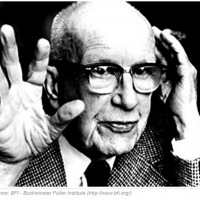Welcome! Here are the website rules, as well as some tips for using this forum.
Need to contact us? Visit https://heatinghelp.com/contact-us/.
Click here to Find a Contractor in your area.
If our community has helped you, please consider making a contribution to support this website. Thanks!
Phoenix light PH76-50 heat exchanger failure theories?
Options

Teemok
Member, Email Confirmation Posts: 757
I didn't install, maintain or make a warranty claim related to this equipment. It ran for 8 years or so untouched on well water and Propane. I believe the corrosion was internal heat and condensate related. The point of failure is just outside of the combustion chamber that was dirty but in very good shape. The tubing looks like good quality material. I like to know what fails and was happy to see it wasn't a weld or some assembly error. This looks like a design that works well under design conditions but was not fortified to be robust on the edge of design conditions.
Any theories on the cause?
My guess: It was tuned on the rich side to start due to a fear of hard start noises and harmonics or just happenstance. The combustion chamber got dirtier and could no longer extract the heat well, the combustion/exhaust enters the tubes hotter than designed for. With a rich tune the flame front (hottest point of flame) is shifted further from the burner surface and closer to the exit port tubing that isn't rated for that much thermal stress. Many of the warped igniters and flame rods we see on mod-cons are from the reverse effect, too lean a tune or clogged up HX's and the flame front moves closer to the burner putting the rods in the hottest point of the flame on long low fire burn cycles.
Design mitigation: Larger heavier gauge transition connector tubes with a bend between the HX tubing and the combustion chamber. The tube and bend would point down slightly and start the spiral for better condensate drainage and expansion and contraction management. LOL, junkyard armchair engineering. The 316 tank bottom and top make for very durable industrial style planters.
Any theories on the cause?
My guess: It was tuned on the rich side to start due to a fear of hard start noises and harmonics or just happenstance. The combustion chamber got dirtier and could no longer extract the heat well, the combustion/exhaust enters the tubes hotter than designed for. With a rich tune the flame front (hottest point of flame) is shifted further from the burner surface and closer to the exit port tubing that isn't rated for that much thermal stress. Many of the warped igniters and flame rods we see on mod-cons are from the reverse effect, too lean a tune or clogged up HX's and the flame front moves closer to the burner putting the rods in the hottest point of the flame on long low fire burn cycles.
Design mitigation: Larger heavier gauge transition connector tubes with a bend between the HX tubing and the combustion chamber. The tube and bend would point down slightly and start the spiral for better condensate drainage and expansion and contraction management. LOL, junkyard armchair engineering. The 316 tank bottom and top make for very durable industrial style planters.

0
Comments
-
The carbon black on the water side of the tubing makes me wonder if this was fired dry at some point.0
-
-
I tried to figure out how CuO (II) is formed in oxygenated water but couldn't find it explained. What I did find is that it is formed easily with heat in air starting at 300C or 572F. Propane oxidized with air yields 1,980C. Plenty of heat to reach those temperatures. I wonder if micro bubble formation on the water side of the heat exchanger creates the conditions for CuO formation as if in air while under water?
Alternatively it could have been dry fired for a spell and it just stayed there. CuO is not water soluble.0
Categories
- All Categories
- 87.3K THE MAIN WALL
- 3.2K A-C, Heat Pumps & Refrigeration
- 61 Biomass
- 429 Carbon Monoxide Awareness
- 120 Chimneys & Flues
- 2.1K Domestic Hot Water
- 5.8K Gas Heating
- 114 Geothermal
- 166 Indoor-Air Quality
- 3.7K Oil Heating
- 77 Pipe Deterioration
- 1K Plumbing
- 6.5K Radiant Heating
- 395 Solar
- 15.7K Strictly Steam
- 3.4K Thermostats and Controls
- 56 Water Quality
- 51 Industry Classes
- 50 Job Opportunities
- 18 Recall Announcements